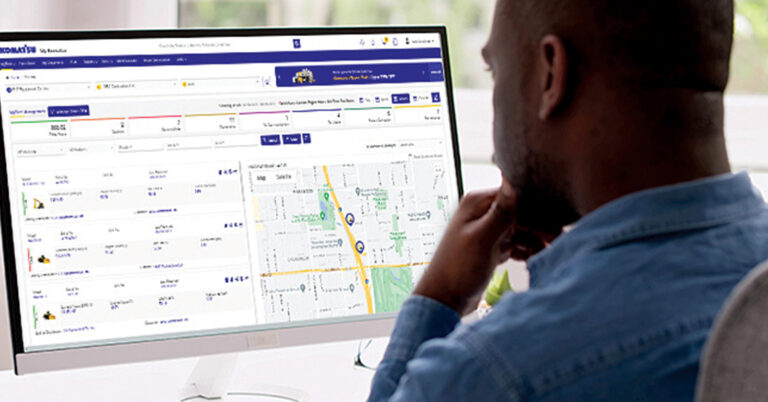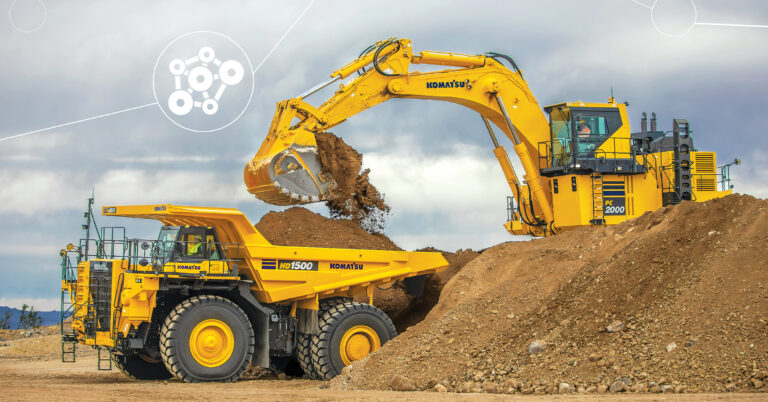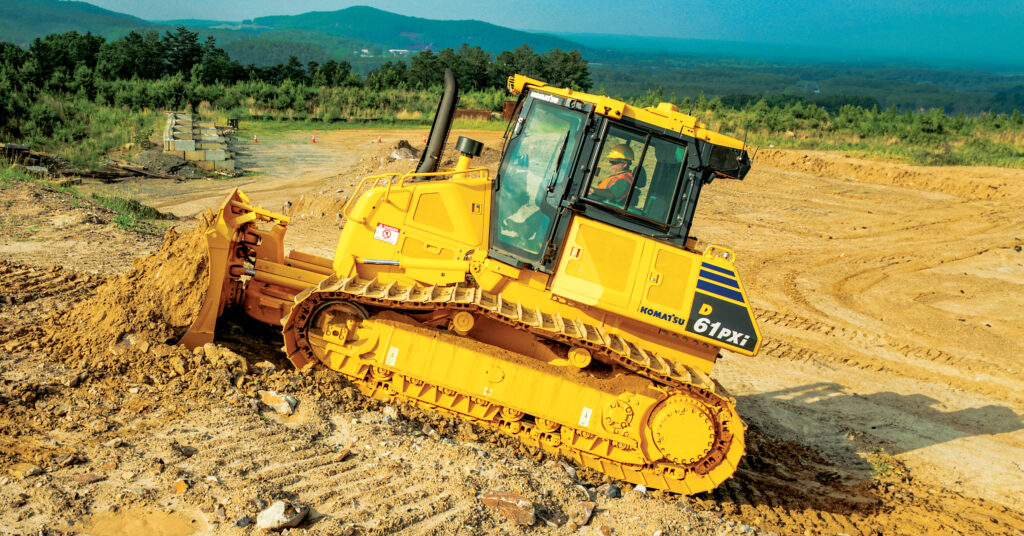
Choosing the Right Fit
Smart Construction solutions can help you increase productivity, track it and make faster critical decisions
Technology use in the construction industry has grown rapidly during the past decade and includes both on-machine technology as well as software designed for each stage of project management. Choosing the right technology to move your business forward comes with many questions, and the correct answers depend on what technology your company has already adopted.

Komatsu has long been a technology proponent. It was among the first manufacturers to incorporate telematics into its machinery, with its Komtrax remote monitoring system that enabled customers to monitor fuel usage, idle time, location and more. During the past two decades, Komtrax has expanded to include additional comprehensive information that helps with proactive fleet management, to help reduce downtime as well as owning and operating costs.
“For our customers, Komtrax was a great introductory option down the technology path, and it continues to be a great feature,” said Jason Anetsberger, Director of Customer Solutions, Komatsu. “On our new machines, it’s easily accessible through our My Komatsu platform and lets you monitor any piece of equipment.”
Anetsberger continued, “Now, the question is: what’s the next step that is right for you in this technological journey? Fortunately, we have many Smart Construction solutions depending on where you are at the moment. We offer solutions that can support a small operation that is currently not using any technology, as well as solutions for large multinationals that have fully embraced machine control and project management systems.”
Anetsberger provided some helpful tips for how to determine which Smart Construction solutions could be beneficial and when the right time to add them is. All of the solutions can be accessed and viewed through your My Komatsu account.
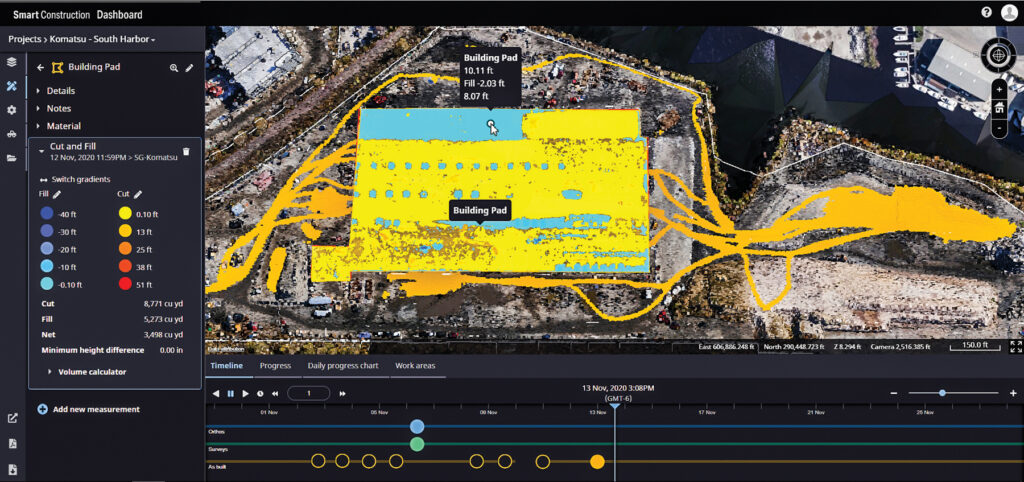
No solutions? IMC is a good introduction
If you are not using any of Komatsu’s Smart Construction solutions, Intelligent Machine Control (IMC) dozers and excavators may be a good starting point, according to Anetsberger. When Komatsu introduced its first IMC dozer more than a decade ago, it was the original Smart Construction solution. Several new models and next generation machines have been added that feature fully factory-integrated GPS machine control, which helps increase productivity and efficiency by reducing surveying and staking costs and eliminating the masts and cables of traditional aftermarket GPS add-on systems.
With seven sizes of IMC dozers, ranging from the 105-horsepower D39i-24 to the 354-horsepower D155AXi-8, there is a fit for practically every construction site application. The IMC 2.0 dozers have advanced features such as proactive dozing that enables operators to cut/strip automatically from existing terrain as well as lift layer control, tilt steering control, and quick surface creation.
On the excavator side, there are IMC machines ranging from the 20-ton-class PC210LCi-11 to the 50-ton-class PC490LCi-11. All have semi-automatic functions that go beyond simple guidance to semi-automatically limit over-excavation and trace a target surface. Once target elevation is reached, even if the operator tries to move the joystick to lower the boom, the excavator doesn’t allow it, reducing wasted time and the need for expensive fill material.
IMC 2.0 excavators feature bucket angle hold control, which automatically holds the bucket angle to the design surface during arm operation. It’s less fatiguing for operators, so they can be more productive, and it produces a better finish-grade surface. Plus, auto tilt bucket control assists operators by aligning the bucket parallel with the slope, so that finish grading can be accomplished without needing to align the machine with the target surface. Testing has shown that these latest generation models help improve accuracy by up to 33% and efficiency as much as 63% compared to conventional excavation and grading methods.
“We have more than a decade of proven success with IMC machines saving time and material costs, to help increase profitability,” said Anetsberger. “IMC was our first Smart Construction solution, and we have built a suite of additional beneficial solutions, including our Smart Construction Retrofit for standard excavators. This technology is a good entry-level system for someone who may be considering GPS but is not ready to fully commit to integrated machine control.”
Smart Construction Retrofit is an add-on, indicate-only system that offers many of the benefits of IMC. It’s three-dimensional, so operators get the advantage of seeing where they are on a project, as well as their relation to target elevation. They can set audio alerts that change tone the closer they get to finish grade. That, along with the visual representation on the app, helps keep operators from digging too deep, saves time and lowers costs.
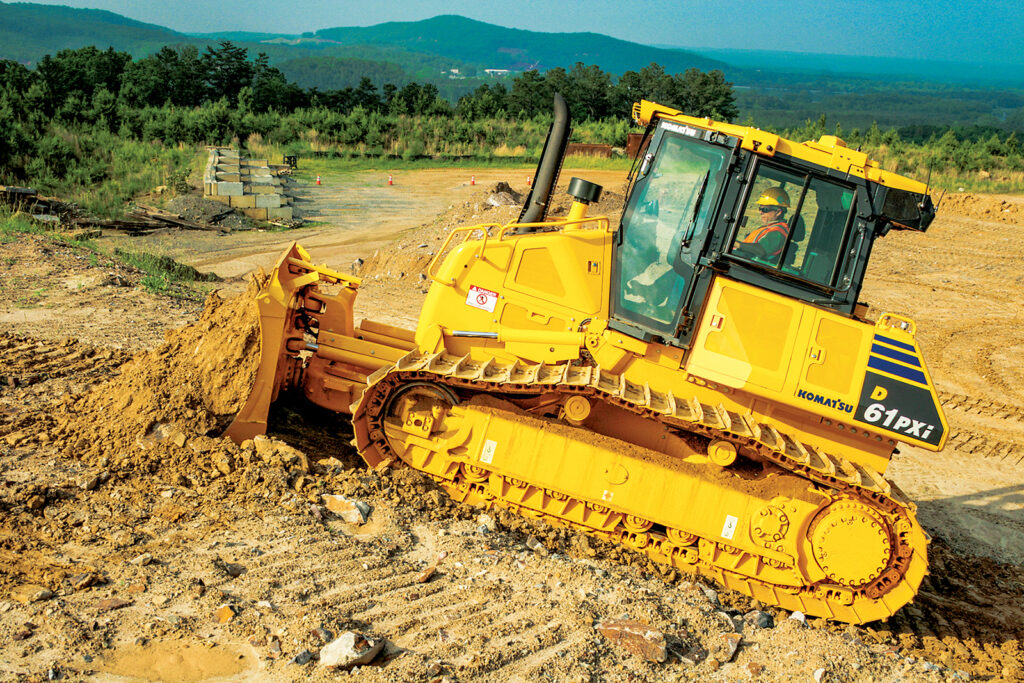
From site to office and vice versa
Additional Smart Construction solutions can help customers better manage their projects from pre-bid to final close out.
“Knowing which one to use is a matter of assessing your goals,” Anetsberger stated. “Do you want faster, more accurate mapping and progress tracking? Do you want to move to 3D digital plans and combine drone data with 3D design data to confirm quantities? Do you want better labor management and cost tracking and to be able to do it remotely?”
A couple of solutions Anetsberger suggested for those who now have IMC machines are Smart Construction Remote and Smart Construction Dashboard. Remote allows users to remotely send design files to targeted machines in the field and remotely support operators without driving to the job site, saving time and fuel expenses. With remote access, contractors can help their operators troubleshoot issues in real time by viewing the same visuals as in the machine.
To help users with tracking cut/fill progress, Dashboard allows remote visualization of job site terrain progress, with the aim to have a digital twin of the job site material movements. It combines data from multiple sources into one comprehensive picture and provides a 3D graphic visualization of all design, drone and machine data to measure cuts/fills, quantities and productivity. Users can confirm pre-bid and topographical map data, track site progress in near real time, document job site conditions as evidence for change orders, and quickly and easily measure quantities.
“Dashboard and Remote are complementing solutions to IMC,” said Anetsberger. “The visual representation and the ability to track job site progress more easily from practically anywhere, can lead to faster decisions and potentially better bottom-line outcomes. They are easy to implement, user-friendly, and the cost savings have been significant for companies using them.”
Further building your solutions portfolio
As any project manager knows, job sites often evolve and plans change, which makes staying on schedule and on budget a challenge. Smart Construction Office is a project scheduling and management solution that serves as a central hub for all your jobs and can help replace manual production and cost tracking with streamlined daily automation. It delivers timely updates, insights and auto-forecasting schedules, and cost estimates throughout a project’s life cycle.
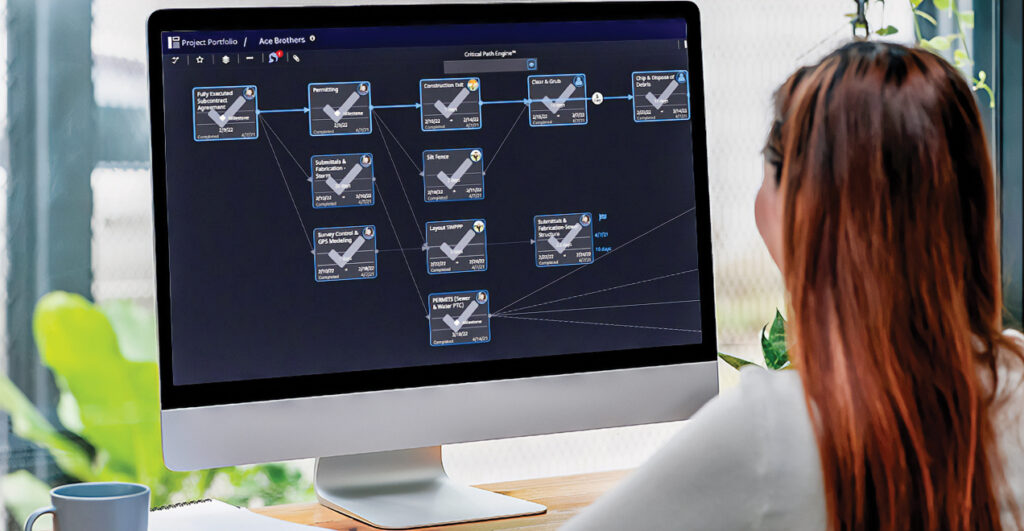
“Office is a project management tool that gives you reliable forecasting and insight into budget versus actual costs,” explained Anetsberger. “Another consideration is Smart Construction Field, a mobile app that uses data to track spending and allows contractors to quickly view current conditions and progress. You can break it down by labor, equipment, materials, receipts, timecards, and much more. Both Office and Field are brand-agnostic, so they can be a great solution for contractors with mixed fleets.”
Additional Smart Construction solutions include Design, Drone and Fleet, which can help replace paper plans with digital files, accurately map job sites, and collect data for fleet optimization.
“There are so many easy ways to implement technology solutions into your operations,” concluded Anetsberger. “We encourage anyone who wants to streamline and optimize their operations to learn about Smart Construction solutions by talking to their distributor about how to get started.”

